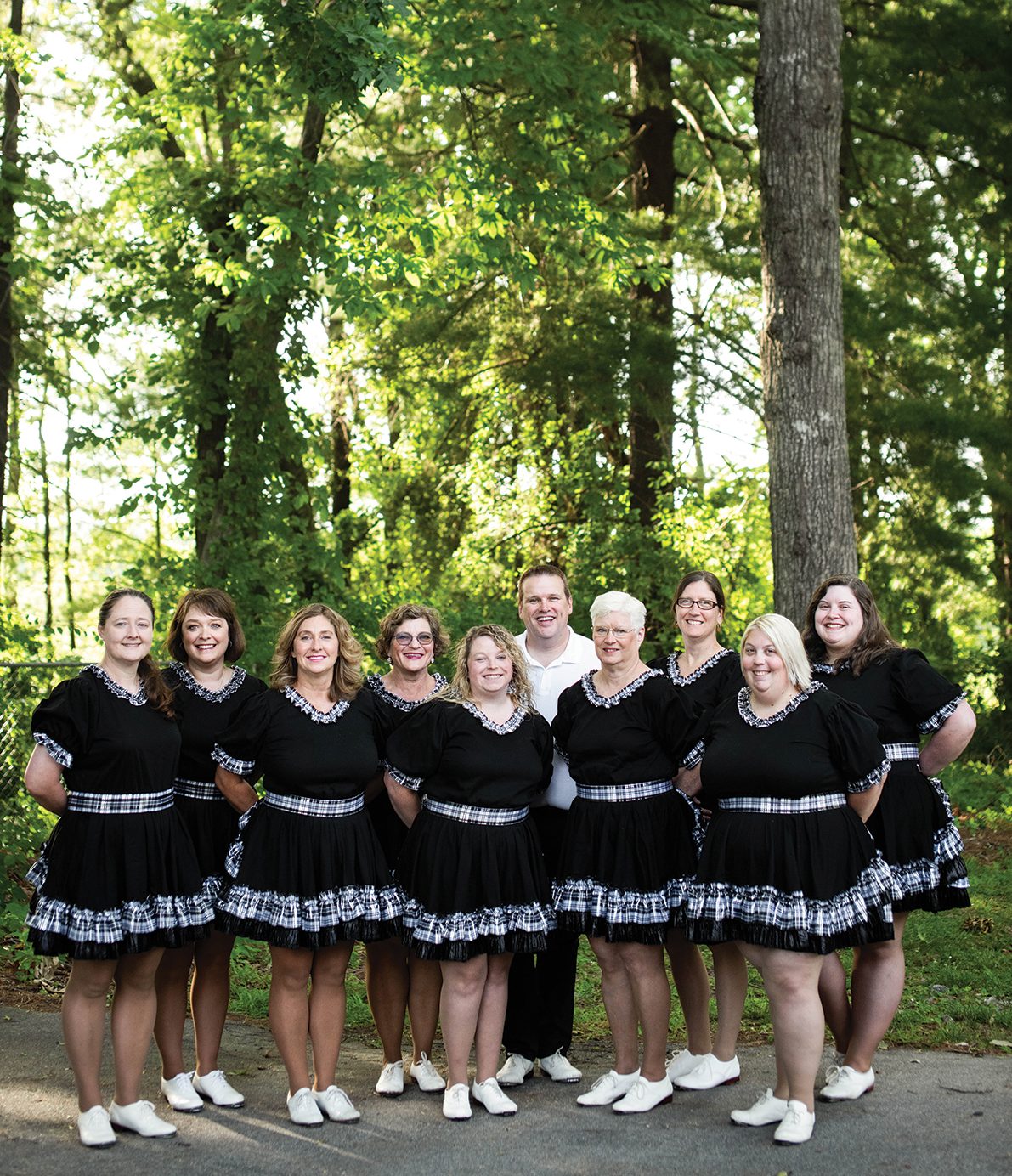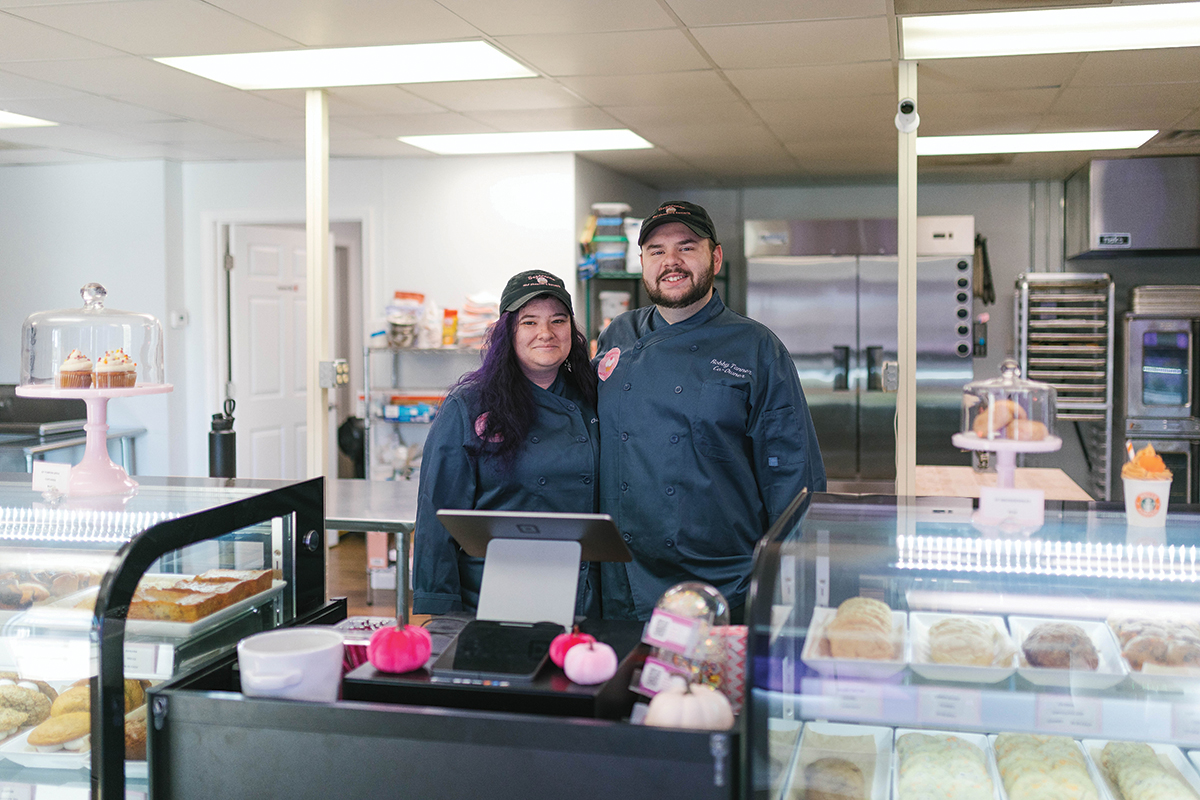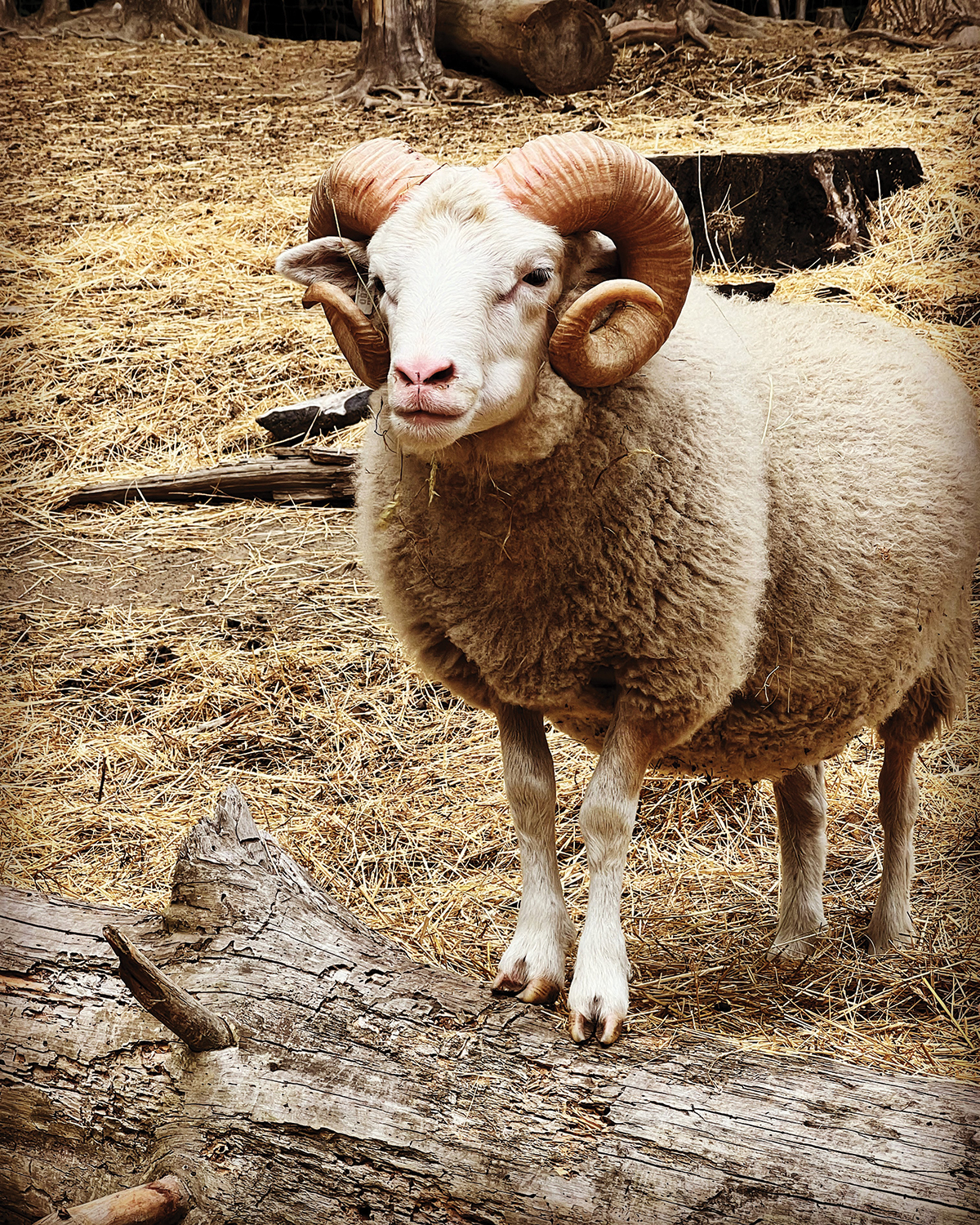Clogging enjoys four centuries of momentum

The Southern Connection Cloggers, a “club team” who dance for fun and camaraderie, stand with their leader, Chip Summey, a competitive clogger and dance coach who oversees teams at the national championships each year.
Photo by Karin Strickland
The history of clogging in Appalachia — widely regarded as the birthplace of the American dance form — taps back nearly four centuries to the mid 1700s, when Scottish, English, Irish, and Dutch-Germans emigrants settled in the area. Their individual folk dances melded together, according to Double Toe Times clogging magazine, to create an impromptu foot-tapping style that came to be known as clogging. The word clog, says author Jeff Driggs, is of Gaelic origin and means “time,” referencing how the dance is done in time with the music, traditionally old-time fiddle tunes or bluegrass.
Christy Cooke, a member of Hendersonville’s Southern Connection Cloggers, can rewind her clogging experience to her childhood in Hayesville, NC. “Clogging was big where I grew up and was always just around,” she recalls. “I never clogged on a team because I was involved in so many other things, but we all grew up knowing the basic steps.”
Regarding those “other things,” Cooke reels off an impressive repertoire of extracurriculars: tap, ballet, gymnastics, basketball, and track. She was also a majorette and a cheerleader. Today, she is a kitchen and bath designer for GBS Building Supply in Hendersonville.
Cooke was in her thirties when she and her friend Amy Jones were inspired to sign up for beginning clogging lessons: “That was over 15 years ago, and we’ve been clogging ever since,” she says with a laugh.
“You learn the Basic [Step] first, and everything kind of builds off that,” she explains. Even the Basic has multiple iterations — Single Basic, Double Basic, and Kick Basic, for example.
As Cooke and Jones became more proficient, click-clacking their way from beginner to intermediate, they found Chip Summey. A longtime competitive clogger with several National Championship titles to his name, Summey teaches and coaches clogging teams for competition at Southern Dance Academy in Gaffney, South Carolina.
His introduction to the dance began on the back porch of his home in Enka when he was just 13. “My stepsister and her boyfriend, who were a few years older than me, needed more boys for their clogging team, so they recruited me and taught me to clog on our back porch,” he recalls. “Within a couple weeks, I was clogging with their team.”

Clogging isn’t done in clogs. Distinctive taps on the heel and toe of a flat shoe keep the beat.
Photo by Karin Strickland
He began with a traditional team, which he explains is freestyle footwork with square-dance figures: “Everyone is doing their own thing, and not doing the same steps at the same time.”
He says freestyle was fairly easy for him to master, but when he got interested in precision clogging, it took a lot more study. “You can’t just clog your way through it like freestyle.”
Summey’s first team was the Appalachian Mountaineers, and he subsequently competed with the Tar Heel Cloggers and Carolina Cutups. Along with colleague Susan Phillips, he oversees the annual USA National Clogging Championships, which holds its 2022 competition over Labor Day weekend at Nashville’s Opryland Hotel. About 400 teams will compete. “Interest in competitive clogging has really picked up,” he notes.
Cooke and Jones are in it for the fun, not the trophies. The group they joined over ten years ago — Southern Connection Cloggers — is a precision “club team” (i.e., non-competitive) led by Summey, with 20 to 25 women spanning ages 18 to 60+ years old. Clogging shoes are the only equipment needed. “The taps help you stay in beat with the music,” says Cooke. “You can definitely hear it when you’re off from everyone else.”
Summey writes new routines to music that meets his criteria: “Something with a good beat, high energy, and fun … that gets the crowd going and clapping along.”

“I’ll keep clogging for as long as I can move,” says Christy Cooke, right, seen dancing with her friend Amy Jones. The two signed up for lessons more than 15 years ago and have been clogging ever since.
Photo by Karin Strickland
That crowd includes folks attending the season’s Hendersonville Street Dances — a 104-year-old summer tradition— and the North Carolina Mountain State Fair in September.
Summey says clogging is something every age and body type can learn, particularly with club teams, where there’s no competitive pressure.
“Clogging is one of those things I intend to do the rest of my life, as long as I can move,” says Cooke. “I may not be able to go as long or kick up my heels as high when I’m 70, but I’ll do the steps. It just puts a smile on my face.”
The Southern Connection Cloggers perform Monday, Aug. 15, 7-9pm at the Hendersonville Street Dances (201 South Main St., downtown) and Wednesday, Sept. 14, 7pm, on the Heritage Stage at the North Carolina Mountain State Fair (WNC Agricultural Center in Fletcher, wncagcenter.org).




Cloggers
By Tony Robles
Born of feet
Of famine
Of rain
Invisible
On a warm
Night in Hendersonville
Where clouds
Carve Mountain dreams
Strings and strums
Feet divine
In dirt
mud
ritual
Feet in rivers lost
Exposing Church legs
Cloggers
Creating spark
Igniting
blood
Tapping questions
Incessant complexity
Periods, accent
Marks, quotations
A testament
Exclamation
Translated by stars
Cloggers
Of flesh, tendons
Tending to mountains
Shaking formations.
Foundations
A smile
Of verve’s
Clench
Stars fall
To the ground
In Hendersonville
(C) Tony Robles.